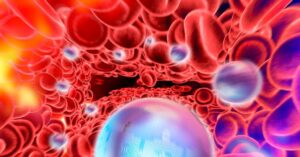
A recent study published in the journal Nature Scientific Reports unveils a surprising discovery in the battle against Stony Coral Tissue Loss Disease (SCTLD), one of the most destructive coral diseases affecting the Atlantic and Caribbean regions. The research suggests that elevated sea surface temperatures could potentially slow the spread of this deadly disease.
First identified off the coast of Miami in 2014, SCTLD has ravaged coral reefs across the Florida Keys, Puerto Rico, Mexico, and parts of Latin America. The disease rapidly strips corals of their tissue, leaving behind barren skeletons. Despite extensive research, the exact cause of SCTLD remains elusive, though environmental factors like ocean warming and nutrient pollution are believed to play a role in its progression.
Breakthrough Findings from Controlled Experiments
In a series of meticulously controlled experiments at the Experimental Reef Lab at the University of Miami Rosenstiel School of Marine, Atmospheric and Earth Science, researchers employed cutting-edge robotic technology to expose eighty coral fragments to varying combinations of water temperature and nutrient concentrations.
Key Findings
SCTLD transmission was significantly lower at a higher temperature of 31°C (approximately 88°F) compared to a lower temperature of 28°C (approximately 82°F). This discovery suggests that peak summer temperatures may offer temporary relief from disease spread in affected regions. In contrast, elevated nutrient levels—particularly ammonium—did not influence disease transmission, though they did impair coral growth, especially when combined with high temperatures.
The research, funded by the Florida Department of Environmental Protection (DEP), focused on the Mountainous Star Coral (Orbicella faveolata), a crucial reef-builder in the Caribbean now listed as endangered. Understanding how environmental stressors interact with coral disease is vital for protecting reef systems and guiding recovery efforts.
Expert Insights and Technological Innovations
“The use of robotic automation allowed us to precisely and independently treat coral fragments with different nutrients and diseases, while keeping each fragment in its own precise isolated environment,” said Ana Palacio, the lead author of the study and an assistant scientist at the University of Miami NOAA Cooperative Institute for Marine and Atmospheric Studies (CIMAS) at the Rosenstiel School and the Atlantic Oceanographic Meteorological Laboratory’s Coral Program. “This breakthrough ensures reliable, contamination-free results and opens new possibilities for high-replication marine disease research at scale.”
The study’s findings are part of the ongoing Florida Regional Ecosystems Stressors Collaborative Assessment (FRESCA) project, a four-year initiative funded by the National Oceanic and Atmospheric Administration (NOAA). FRESCA aims to identify environmental thresholds for reef resilience under increased stressors, including ocean warming, acidification, and low oxygen conditions.
Future Research and Implications
The researchers plan to expand their work with future experiments to examine how combined stressors may alter disease dynamics and coral health more broadly. This ongoing research is crucial as coral reefs face mounting threats from climate change and human activities.
The study, titled “Elevated temperature decreases stony coral tissue loss disease transmission, with little effect of nutrients,” was published on July 1, 2025, in the journal Nature Scientific Reports. The authors include Ana M. Palacio-Castro, Nash Soderberg, Zachary Zagon, Kenzie Cooke, Michael S. Studivan, Taylor Gill, Chris Kelble, Tyler Christian, and Ian C. Enochs, affiliated with the Cooperative Institute for Marine and Atmospheric Studies and the NOAA Atlantic Oceanographic and Meteorological Laboratory.
As the scientific community continues to unravel the complexities of coral diseases and their interaction with environmental factors, this study provides a glimmer of hope. The potential for high ocean temperatures to slow SCTLD spread could inform future conservation strategies, offering a temporary reprieve for these vital marine ecosystems.






